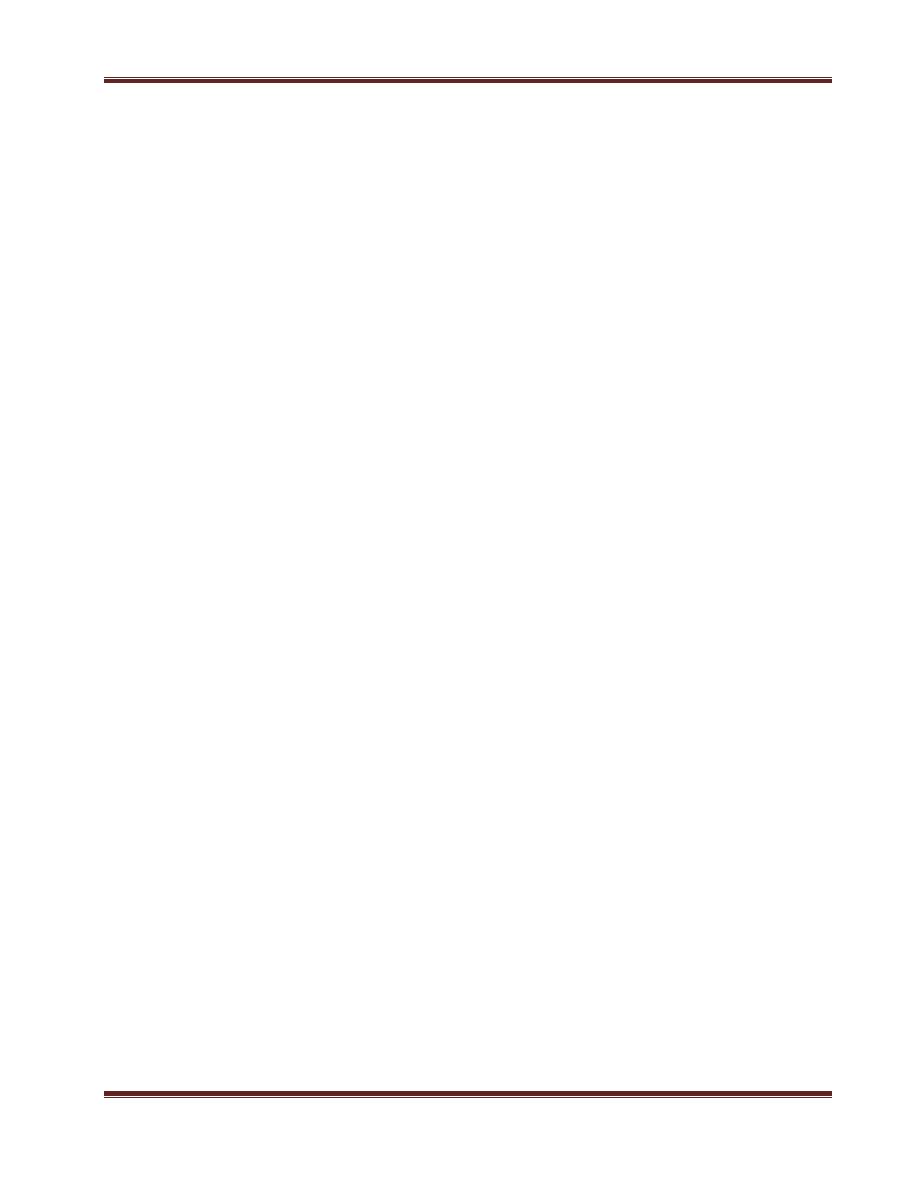
Basic concepts in computer Raghad Mohammad Al-Saigh
University of Mosul-Mosul Medical College
Page 1
BASIC CONCEPTS IN COMPUTER
Before understanding the various parts that constitute the computer and the working of the computer, let us
list some of the benefits, applications and limitations of the computer.
Benefits of Computers
The three main benefits of using computers are :
-Speed
-Accuracy
-Capacity to take large amount of work.
Computer work at a very high speed and are much faster than humans. The human equivalent of an average
computer would be more than one million mathematicians working 24 hours a day.
In addition to being fast, computers are very accurate. If the input and the instructions are accurate the
output will also be accurate.
Unlike humans, computers do not get bored or tired. The monotony of repetitive work for long hours
do not affect the computers.
Applications of Computers
Computers are used in various fields ranging from making cartoon films to space research.
Some applications of computers are:
- Railway reservation
- Banking and Accounts
- Weather Forecast
- Space Research
- Medical Diagnosis
- Chemical Analysis
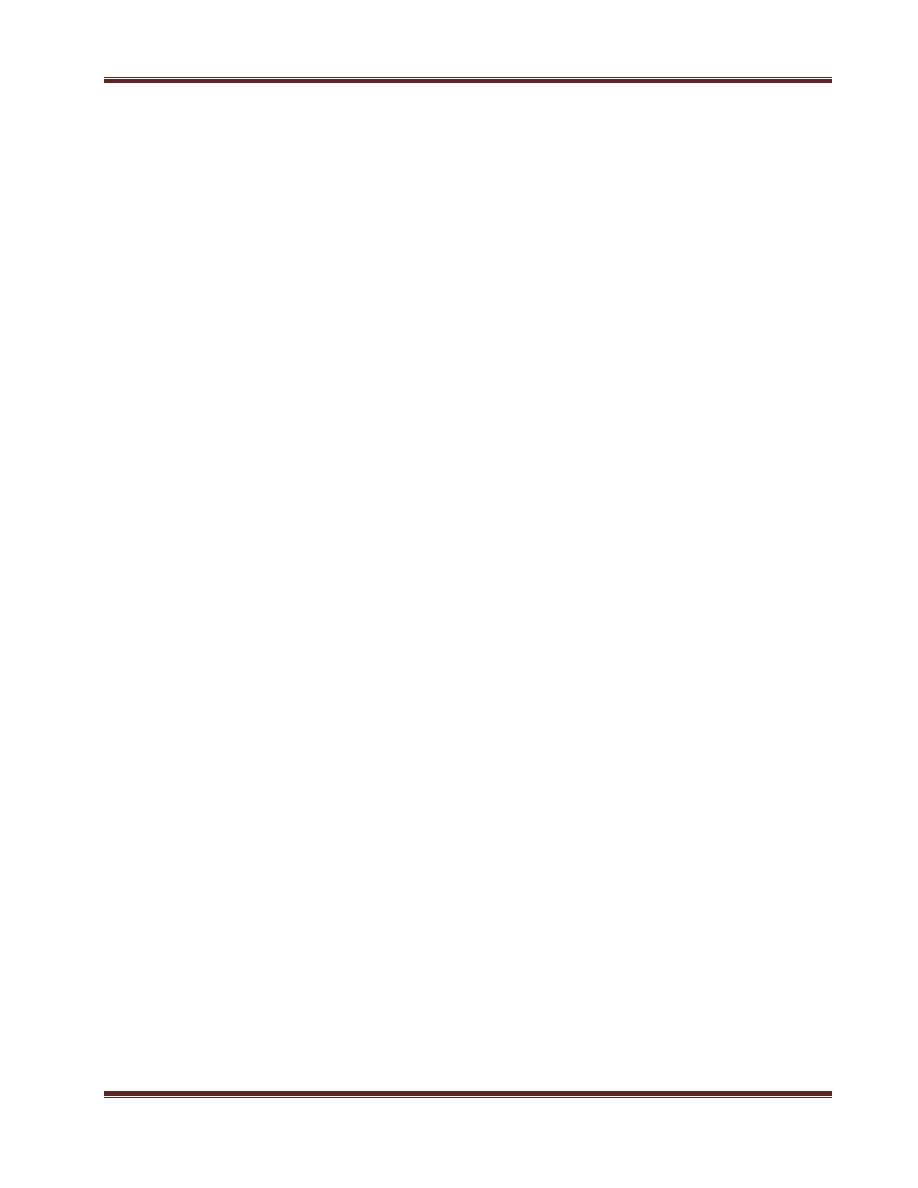
Basic concepts in computer Raghad Mohammad Al-Saigh
University of Mosul-Mosul Medical College
Page 2
TYPES OF COMPUTERS
Computers are categorized on the basis of size and performance. Generally, the larger the system, the
greater is its processing speed, storage capacity, cost and ability to handle large number of devices.
The various types of computers are:
- Microcomputer
- Personal computers
- Minicomputers
- Mainframes
- Super computer
Microcomputers
Systems on the lower end of the size scale are microcomputers. They may be tiny special purpose
devices dedicated to carrying out a single task such as one inside a camera.
Personal Computers
The most popular form of computer in use today is the Personal Computer generally known as the PC. The
PC can be used for various applications. It can perform a diverse range of functions.
Mini Computers
Mini computers are small, general-purpose computers. They can vary in size from a small desktop model
to the size of a small filing cabinet. A typical mini system is more expensive than a PC and surpasses of
PC in storage capacity and speed. While most PCs are oriented towards single users, mini systems are
designed to handle the needs of multiple users, i.e., more than one person can work on a mini at the same
time (example: cash registers in grocery store).
Mainframe Computers
Mainframe computers are large enough to fill an entire. They can simultaneously handle hundreds of
different programs and users without sacrificing performance. They process large volumes of data at an
incredible speed. Mainframes are commonly found in government agencies or large organizations,
e.g., telephone companies, credit card companies, airlines, or universities. Often, users include members of
the public who need access to this information. For instance, you access a mainframe computer whenever you
use your bankcard at an automated teller machine (ATM).
Super computer
A super computer is considered to be the fastest type of computer available. It is very
expensive due to the amount of information that needs to be processed on a daily basis.
Supercomputers generally have specialized software programs installed and are typically
used for complex scientific applications
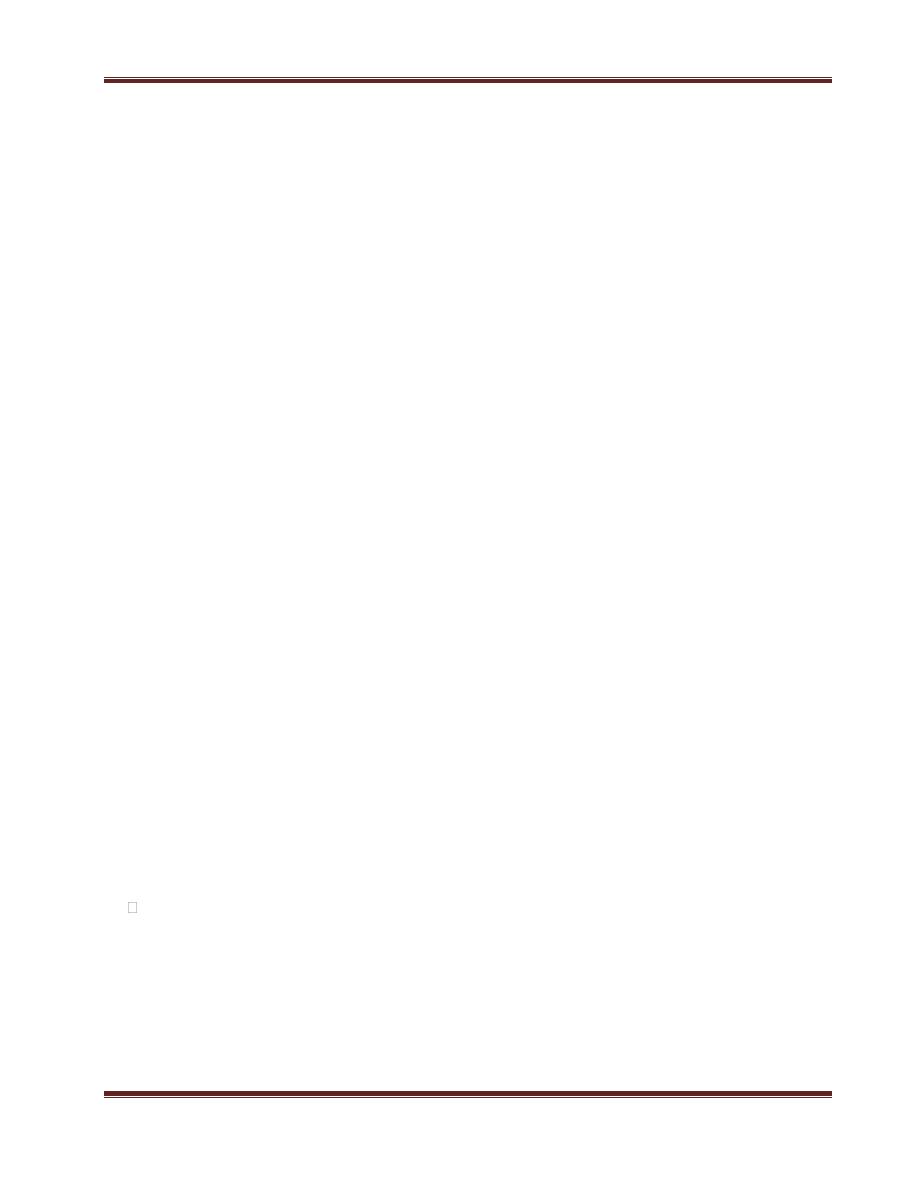
Basic concepts in computer Raghad Mohammad Al-Saigh
University of Mosul-Mosul Medical College
Page 3
HARDWARE AND SOFTWARE
Computer hardware includes all the electrical, mechanical, and the electronic parts of a computer. Any part
that we can see or touch is the hard ware.
Software: A set of instructions is called a program. A collection of programs is called Soft- ware
Three types of software are control the computer
- Application Software
Software especially suited for specific applications for example, railway and airline reservation, billing,
accounting or software which enables creation and storage of documents are termed as application
software.
- System software
in the above airline reservation example, the clerk types your name and other details through the
keyboard. But how does this go to the system unit? This activity is done by a set of instructions called the
Operating Systems.
The Operating System manages the various 1/0 devices of the computer and enables the user to interact with
the machine.
- compilers and interpreters
The computer understands only machine language i.e. 0’s and 1’s. In the above example how do you
think it understands the reservation clerk’s query in English? There has to be a software which translates
the user language into machine language.
The software which does this translation is known as the support software. Examples of support software
are compilers and interpreters.
For example, if you go to Italy and you do not know Italian, you would need an interpreter to translate the
English spoken by you into Italian.
COMPUTER COMPONENTS IN DETAIL
Elements of a Personal Computer:
The following picture shows an example of a personal computer system (PC). The system unit or box,
monitor, keyboard, and mouse are part of the system hardware. There are four major hardware
component parts on a system: the Central Processing Unit (CPU), Random Access
Memory (RAM),Input/Output (I/O) Devices, and Storage Devices.
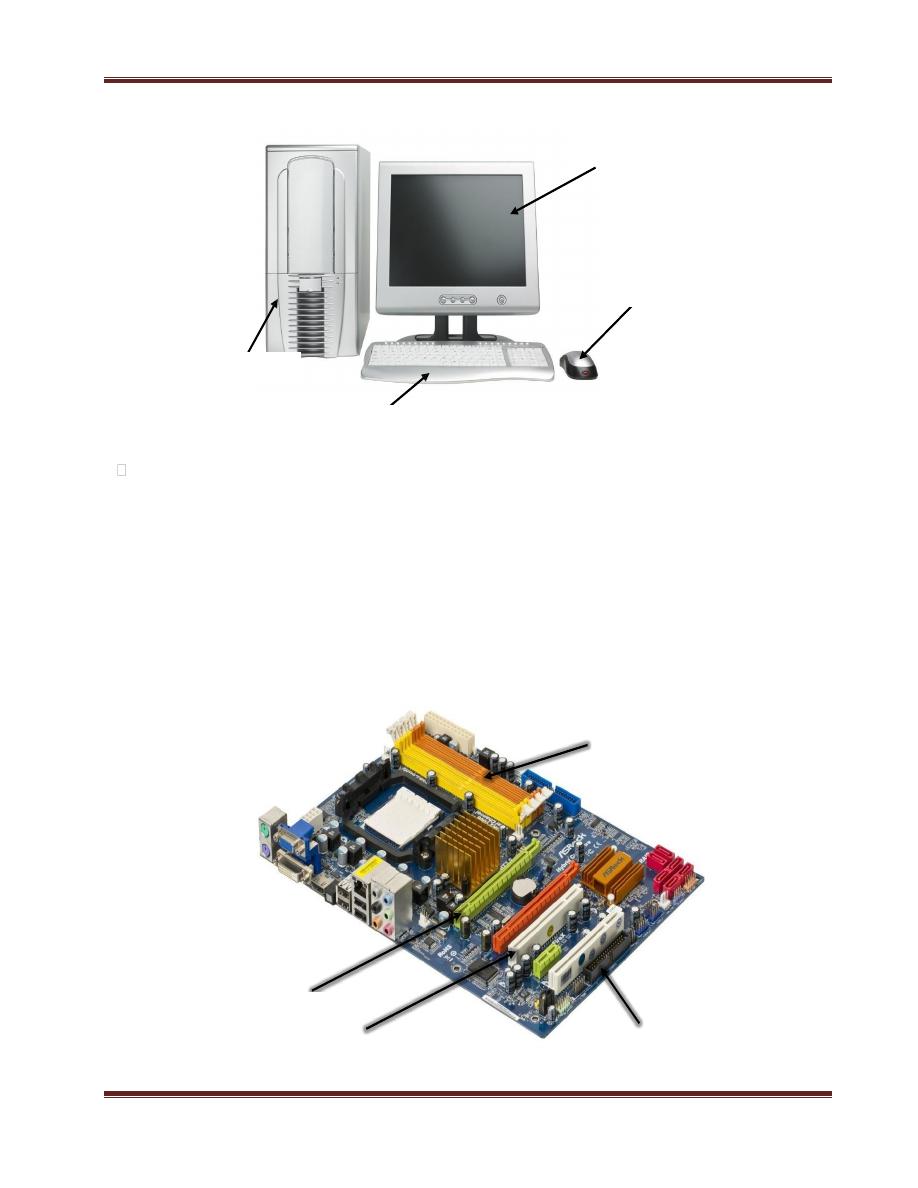
Basic concepts in computer Raghad Mohammad Al-Saigh
University of Mosul-Mosul Medical College
Page 4
RAM
Slots
AGP
Slots
PCI Slots
CPU Slot
Looking at the System Unit:
The System Unit or Box is often the most important and expensive part of the computer system. Inside
the box, there are many separate devices that perform specialized functions for the computer. If one of
these devices fails, it is usually a matter of replacing the defective part. The power supply,
which provides electricity to the devices, is also located inside the box. Descriptions of these
components follow.
1. Motherboard:
The largest electronic circuit board in the computer is called the motherboard. It is the foundation of the
computer and consists of the CPU, RAM, and ROM BIOS.
Monit
or
Mou
se
System Unit or
Box
keyboa
rd
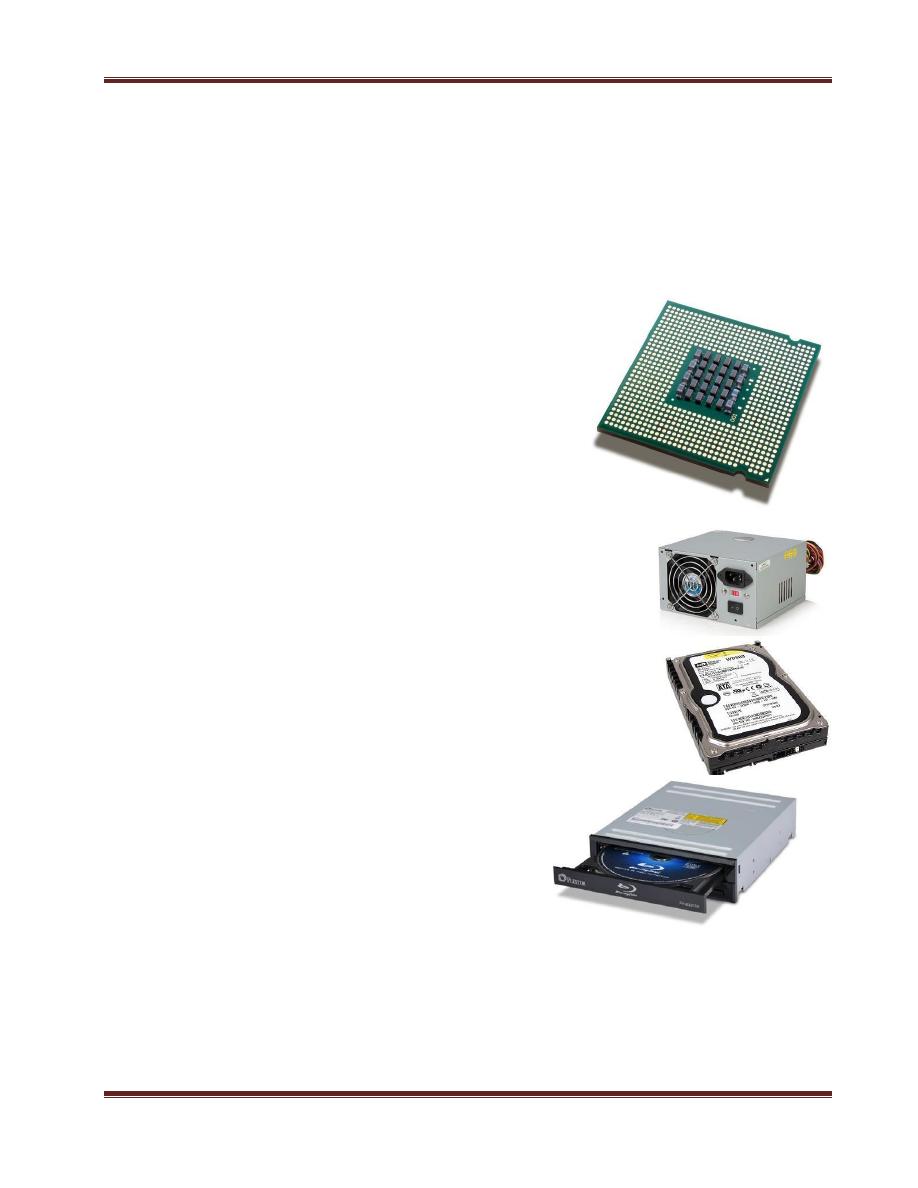
Basic concepts in computer Raghad Mohammad Al-Saigh
University of Mosul-Mosul Medical College
Page 5
PCI Slots: Peripheral Component Interconnect; these slots allow you to add new components or
cards in the computer, such as a modem or sound card.
AGP Slot: Accelerated Graphics Port; this slot is meant for a card that can handle 3-D graphics.
CPU Slot: Central Processing Unit; this slot will contain the microprocessor chip.
RAM Slots: Random Access Memory; these slots are designed for these types of memory chips
(covered later in this module).
2. The Microprocessor Chip:
The microprocessor chip is the “brain” of the computer and is
located on the motherboard. This can also be referred to as the
CPU or Central Processing Unit. It is the component that
receives and executes instructions from the software programs
and the user. Each model or type of CPU processes
information and instructions at a different speed measured
in Megahertz (MHz) or Gigahertz (GHz).
3. The Power Supply:
Every system box has a power supply that converts the AC (alternating
current) coming from a wall outlet to the DC (direct current) format
needed by a computer.
4. Hard Disk Drives:
Computers use hard disk drives (hard drive) as their primary storage
for both data and programs. Many software programs must be installed
onto a
hard disk before you can actually use them.
5. CD Drives:
The CD-ROM (Compact Disk Read Only Memory) or CD
drive is another form of data storage.
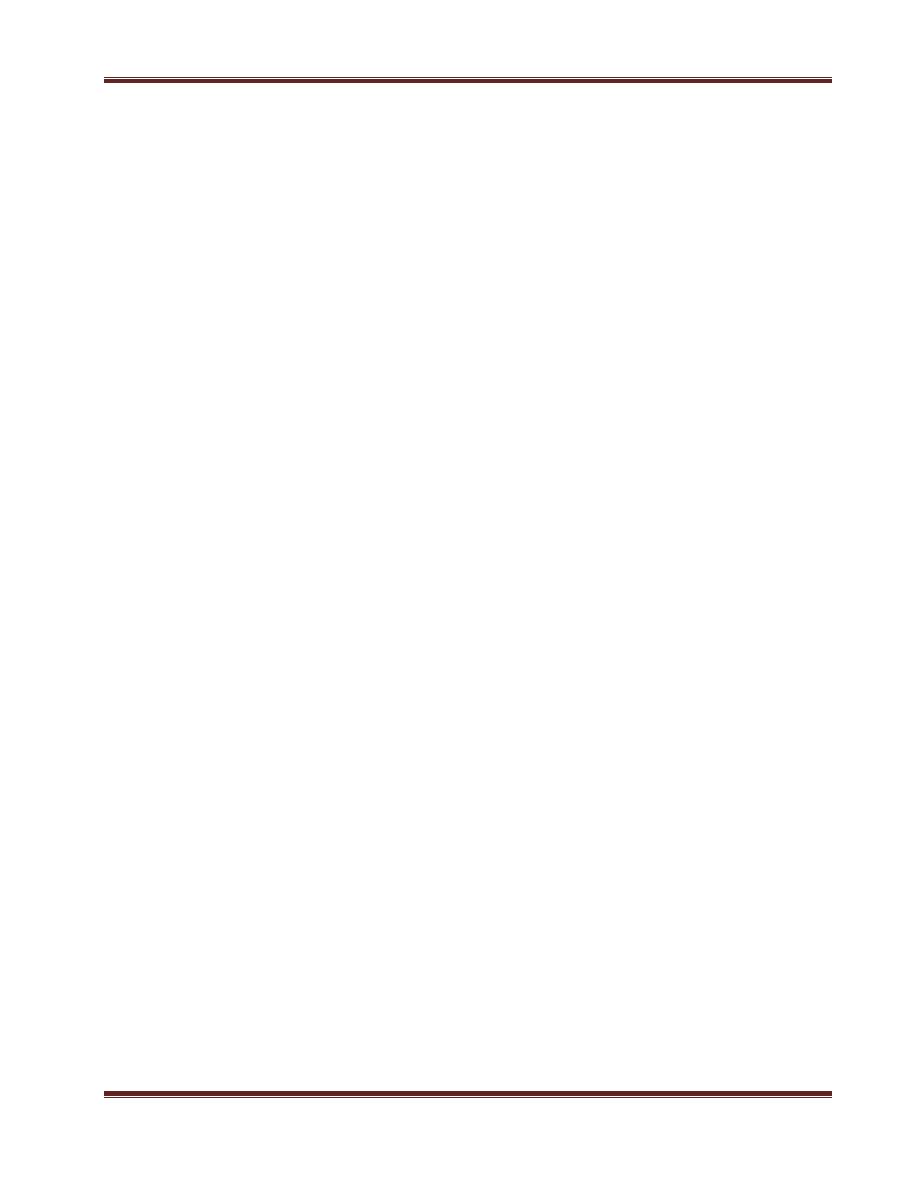
Basic concepts in computer Raghad Mohammad Al-Saigh
University of Mosul-Mosul Medical College
Page 6
6. Memory:
Its either small chips fixed in slots in mother board or built in within the mother board.
Read Only Memory (ROM) BIOS: The Read Only Memory - Basic Input/Output System
(ROM BIOS) is a group of integrated circuits responsible for starting the computer, checking
the RAM and loading the operating system. This occurs only when the computer is first turned on
or each time you have to restart (reboot) the computer.
Random Access Memory (RAM): Random Access Memory (RAM) is a kind of electronic pool of
memory where the computer can hold programs and data. It is located on the motherboard with the CPU.
The computer uses RAM to temporarily hold the current software program and the current
data created by the user, this may also be referred to as system RAM. RAM is volatile — it
only works when the computer is turned on and the information “vanishes” when the computer is
turned off.
7. Input output Device
Input device like Keyboard, Mouse and Scanner.
Output device like Monitor, printer and data show.
SUMMARY
# Information is power and Computer help us in managing information.
#
Computers are used in various fields ranging from making carton films to space research. They are
used in Medicine, Research and Commercial areas.
#
There main benefits of computers are speed, accuracy and ability to take large amounts of work
#
Computers cannot do anything on their own. They have to be explicitly told what is to be done.
#
Computers work on the principle of Input-Process-Output. A computer takes the input, processes it,
and produces the result.
#
A set of instructions is called a program. A collection of programs is called Soft- ware. Software
is of three types-System software ,Application software and compiler .
# Keyboard, Mouse, Scanner are some of the Input devices.
